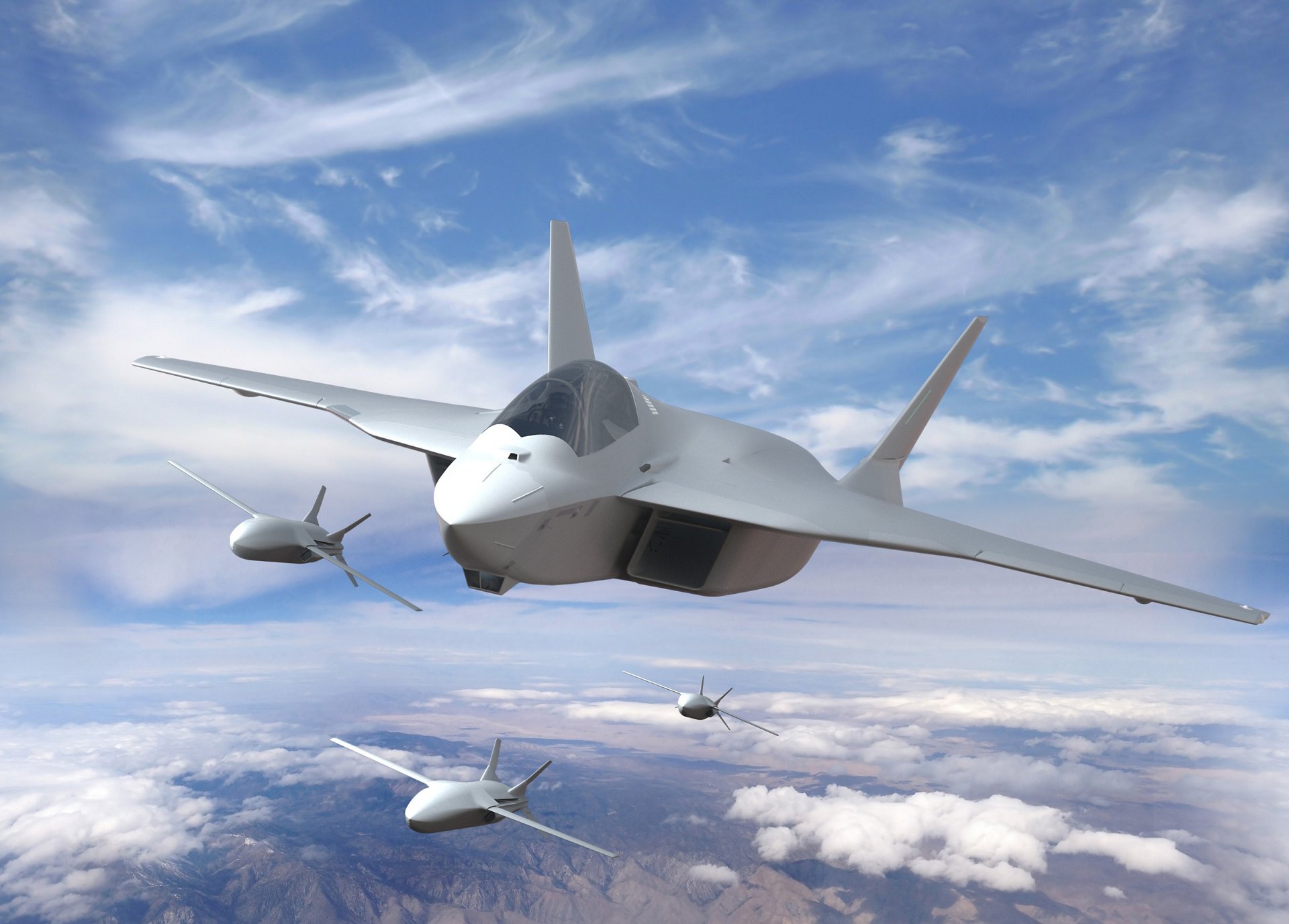The largest weapons program in Europe, the ‘FCAS’ is about to get a second wind as France and Germany finally set aside their differences and accelerate their next-generation fighter jet program.
Currently, the West is pursuing three sixth-generation fighter jet programs – the Next Generation Air Dominance (NGAD) of the United States, the Tempest of the United Kingdom, and the Future Combat Air System (FCAS) of the European conglomerate.
Of these, the FCAS has trailed behind its contenders in a big way, allegedly putting off the induction of a futuristic fighter jet by years.
However, after two years of bickering, Germany and France and two of the key corporations involved, Airbus and Dassault Aviation, are finally set to formally advance to a significant stage of the FCAS project.
Financial Times reported that the contractors would build a demonstrator jet together during the next phase of the program.
According to the FT report, two anonymous sources cited by the publication predicted that an agreement could be reached in the upcoming days. The report comes against the backdrop of the German contractor Airbus giving the green light to the FCAS in a recent interaction.
CEO of Airbus Defense and Space, Mike Schoellhorn, recently indicated the next stage of FCAS was on a more secure footing while speaking in Berlin on November 14. Schoellhorn said, “France and Germany are each convinced of the importance of FCAS. There is no alternative; it must work.”

Moreover, on November 16, a new modular design for an armed “heavy loyal wingman” that will be used as part of the larger FCAS was showcased by Airbus at the International Fighter Conference 2022 (IFC 2022), reported Janes.
The loyal wingman concept has been adopted by NGAD, Tempest, as air combat moves to manned-unmanned teaming.
The next phase of the FCAS Program, expected to begin soon, is known as “Phase 1b.” A budget of about €3.8 billion has been allocated for this program phase. However, discussions came to a standstill due to differences over the specifications of the jet and how the firms would share intellectual property, split the labor, etc.
In contrast, the British Tempest program, which is the primary competitor of FCAS, is progressing at a war footing. The delay caused by the FCAS conglomerate could catapult Tempest to the forefront of Europe’s future combat jet efforts.
Tempest is being pursued by the UK and Italy and could soon be joined by Japan’s F(X) program.
The US, on its part, has already flown a prototype of the NGAD sixth-generation fighter, and details keep emerging now and then even though the overall program remains cloaked in secrecy.
Now that both partners appear to be fully committed to the program, we revisit what led to the temporary discord between Germany and France.
The Fractures Within The FCAS & The Rekindling
France and Germany first floated the idea of a Future Combat Air System in 2017. Three years later, in February 2020, an agreement worth €150 million was made to fund the system’s early development work. Spain officially joined the program in December 2020.
FCAS was envisioned as a next-generation fighter jet with cutting-edge communication technology that can perfectly harmonize with drones.
The future fighter prototype will fly for the first time in 2030. The aircraft is scheduled to be ready for service between 2040 and 2045. The FCAS strives to replace the French Rafale multirole fighters, German Eurofighter Typhoons conducting air-to-air missions, and Spanish Typhoons doubling up as ground-attack aircraft.
Military and political leaders expressed concerns soon with the project’s conception that it may never take off due to disputes between Airbus, the project’s representative of Germany, and rival Dassault.
There were conflicts over who would be in charge of critical aspects of the program and how to share technology. EurAsian Times published a detailed report on the difference between the key partners on FCAS that can be read here.
It is worth highlighting that while the NATO ally US manufactured two fifth-generation fighter jets (the F-22 Raptor and the F-35 Lightning II), Europe could not go beyond its 4+ gen aircraft, such as Eurofighter Typhoons and Rafales.
Moreover, the UK, Italy, and Japan all operate American F-35 fighters, while Germany will soon receive its fleet of F-35A. This puts France and Dassault Aviation in a dilemma. Consequentially, it became a friction point between France and Germany after Berlin announced its plan to purchase the F-35, and Paris thought this would cool down efforts to work on the FCAS.
At a press conference held in Paris earlier this year, Dassault Chief Executive Officer Eric Trappier stated that discussions between the French company and Airbus’ German and Spanish subsidiaries were halted and that a deal to move to the next phase has not yet been inked.
The Germans “have to trust this new team, including the leader of the team, which is Dassault. If this isn’t the case, it’s better not to go,” he said.
He added that he wouldn’t accept any co-leadership organization. “I won’t do it. We’re hitting up against that,” Trappier said. There were concerns that France would permanently give up on FCAS and pursue its next-generation fighter just like it manufactured Rafale.
The domestic arms industry of Germany is currently annoyed due to Berlin’s decision to purchase F-35 fighter jets off-the-shelf without involving local contractors in maintenance.
The kick-start of FCAS will undoubtedly stir up the German arms industry. In contrast, The capability mismatch with countries like China and Russia that operate fifth-generation fighter jets is an incentive for France to get on the FCAS project seriously.
Due to the delays, it is improbable that a jet will be delivered before 2040. CEO of Dassault Eric Trappier has cautioned that 2050 will be a more practical deadline.
- Contact the author at sakshi.tiwari9555 (at) gmail.com
- Follow EurAsian Times on Google News